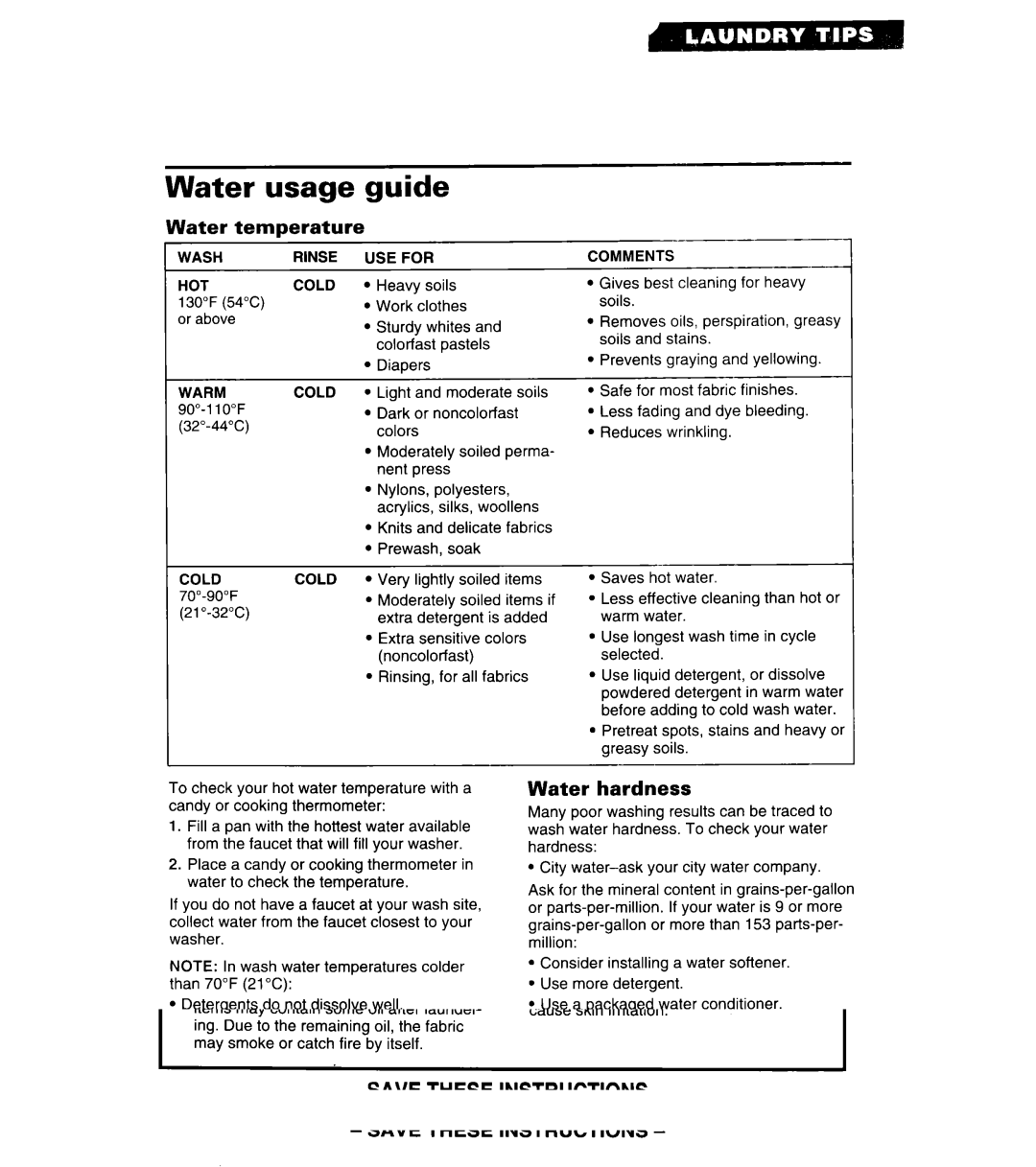
Water usage guide
Water temperature
WASHRINSE
HOTCOLD
130°F (54°C) or above
WARMCOLD
90”-110°F (32”-44°C)
COLD COLD 70”-90°F (21”-32°C)
USE FOR
lHeavy soils
lWork clothes
l Sturdy whites and
colorfast pastels
lDiapers
lLight and moderate soils
lDark or noncolorfast colors
l Moderately soiled perma- nent press
l Nylons, polyesters, acrylics, silks, woollens
lKnits and delicate fabrics l Prewash, soak
l Very lightly soiled items
l Moderately soiled items if extra detergent is added
l Extra sensitive colors (noncolorfast)
lRinsing, for all fabrics
COMMENTS---
lGives best cleaning for heavy soils.
l Removes oils, perspiration, greasy soils and stains.
lPrevents graying and yellowing.
lSafe for most fabric finishes.
lLess fading and dye bleeding. l Reduces wrinkling.
lSaves hot water.
lLess effective cleaning than hot or warm water.
lUse longest wash time in cycle selected.
lUse liquid detergent, or dissolve powdered detergent in warm water before adding to cold wash water.
. Pretreat spots, stains and heavy or greasy soils.
To check your hot water temperature with a candy or cooking thermometer:
1.Fill a pan with the hottest water available from the faucet that will fill your washer.
2.Place a candy or cooking thermometer in water to check the temperature.
If you do not have a faucet at your wash site, collect water from the faucet closest to your washer.
NOTE: In wash water temperatures colder than 70°F (21°C):
lDetergents do not dissolve well. l Soils are difficult to remove.
lSome fabrics will retain wear wrinkles and may have increased pilling.
Water hardness
Many poor washing results can be traced to wash water hardness. To check your water hardness:
l City
Ask for the mineral content in
. Consider installing a water softener.
. Use more detergent.
lUse a packaged water conditioner. l Do not use soap.
